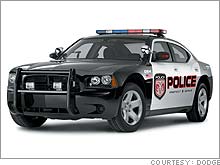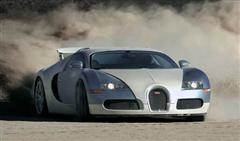
Today, CNN has an article about U.S. police cars, and how they are all domestic maker vehicles. For years, police departments have used the Ford Crown Victoria due to it’s space, power, and drive train. (Big truck, big front seat, large V8, rear wheel drive). In the last few years, police departments have shifted over to the Chevrolet Impala (smaller, V6, front-wheel drive).
For 2006, they tested two new RWD cars; The Dodge Magnum and Dodge Charger. Both can be purchased with rear wheel drive, and both are very quick, with 5.8L V8’s producing 400+ hp. The problem is the trunk isn’t as big as in the Crown Victoria, and the “interior ergonomics” aren’t as good as the Crown Vic.
This all being said, aside from massive cultural resistance and backlash, what is the reasoning for using American cars? Surely it isn’t repair recordm build quality, or predominance of rear-wheel drive vehicles.
Most Japanese sedans are front-wheel drive, so we’ll leave the Japanese out of this.
Most German sedans are rear-wheel drive, or all wheel drive. Arguably, AWD is more expensive to maintain, so let’s reluctantly throw Audi out of the picture. That leaves BMW and MB producing large, spacious, rear wheel drive, powerful sedans.
Let’s do a little side by side comparison here. To keep things consistent, the source of the data will be Edmunds, and all prices will be based from invoice price. (Arguably, a police department buying 50-100 cars might get a decent discount straight from the factory.)
2006 Ford Crown Victoria:
Invoice: $28,282
Build Location: Canada
Weight: 4,129 lbs
Front Legroom (cubic inches): 42.50
Rear Legroom (cubic inches): 39.60
Engine/Drive-train: 4.6L V8 239hp, RWD
2006 BMW 550i:
Invoice: $52,415
Build Location: Germany
Weight: 3,803 lbs
Front Legroom (cubic inches): 41.50
Rear Legroom (cubic inches): 36.00
Engine/Drive-train: 4.8L V8 360hp, RWD
2006 Mercedes-Benz E500:
Invoice: $65,000 (approx)
Build Location: Germany
Weight: unknown
Front Legroom (cubic inches): 41.90
Rear Legroom (cubic inches): 35.60
Engine/Drive-train: 5.0L V8 302hp, RWD
So, why don’t US Police Departments buy a BMW or Mercedes? It looks like it’s due to price and room, for starters. The American car, which would be cheaper to buy and repair, is bigger and substantially cheaper. No Autobahns here in the U.S., but rarely does a criminal need to be tailed at 130+mph.

